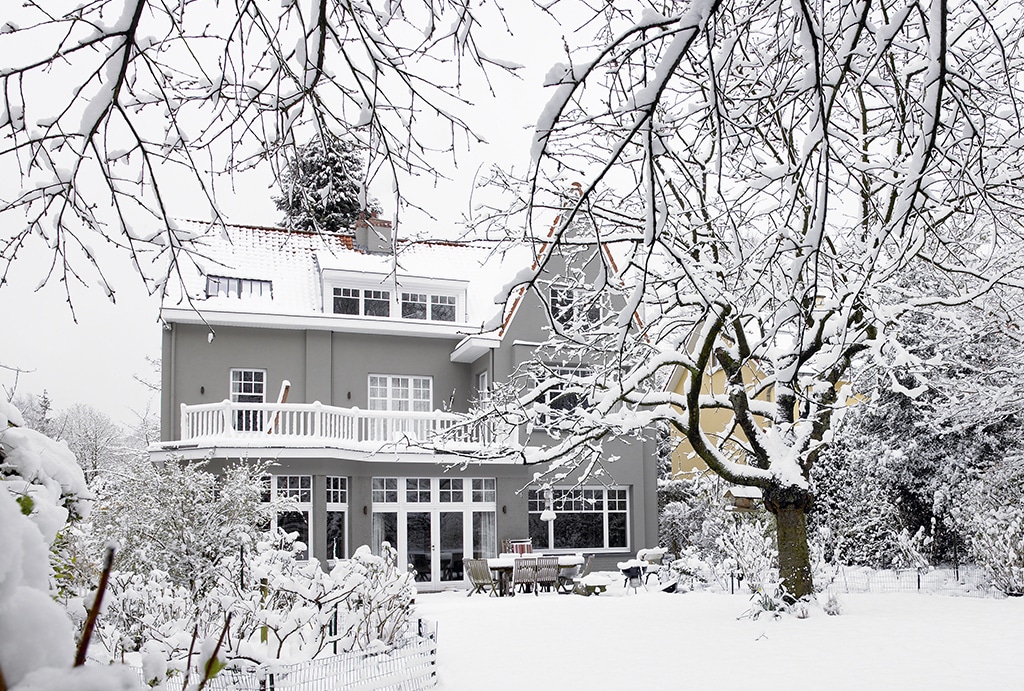Rock salt is well known for its damaging effects on roads, driveways, other outdoor surfaces, and even vehicles. However, there is another time when it can do damage — when you use rock salt on your roof. Most homeowners know the dangers of snow and ice accumulation on the roof. Unfortunately, many reach for the rock salt to cut through the snow and ice. “When the snow piles high in the winter, most of us are not concerned with the harmful results of applying roof melt chemicals. Afterall, salts and roof melt chemicals are a recognized and relatively easy method to melt snow and prevent ice build-up. What is not understood is the downstream damaging impact of using salts and chemicals” (HotEdge). It is a bad idea to use rock salt on your roof for a number of important reasons:
Why You Shouldn’t Use Rock Salt on Your Roof
While it works and will remove snow and ice from your roof and prevent accumulation, it is not recommended to use rock salt on your roof. In this article, we hope to address the main reasons why rock salt is not a good way to cure ice dams:
- It is ineffective: Rock salt can melt ice only at temperatures down to 20° F (-6.67° C). What this means in layman’s terms is it will only work if the temperature is on the ‘warm side of freezing’ or 20 to 32° F (-6.67 to 0° C).
- It is not practical: Another disadvantage to trying to use rock salt to melt ice dams is that the typical ice dam is made of many hundreds of gallons of frozen water and can be extremely heavy. The sheer volume of snow and ice that can be on a roof that has not been cleared in a while would require too many pounds of rock salt to melt it to be truly practical.
- It rusts nail heads: Rock salt may not damage the shingles themselves, but it can cause the nails holding your shingles to the roof to corrode. In turn, this rust can cause stains and streaks on your roof. Additionally, if they get too bad, the nails can rust through and break, thus causing your shingles to become loose and get damaged.
- It rusts other building materials: Rock salt that you scatter along your roof will not stay there for long. As it melts, the ice and as the weather affects the salt, it will wash over the eaves and over the rest of your roofing system. It can corrode downspouts and also damage driveways and sidewalks where the melted salt ends up pooling.
- It can damage garden plants: Once rock salt melts and mixes with water, it will drip down the roof and through the downspouts. When it pours out of the downspout and drips off the eaves of your roof, it can reach garden beds and “poison” the soil. Salt is damaging to plants and very few varieties are tolerant enough to withstand the dangerous levels that can occur when you use rock salt on your roof.
- It can damage masonry: Melted water with rock salt mixed can drip off the roof edge and onto stone or brick masonry. Salt particles can easily get in through the porous surfaces build up quickly. The true danger is that this salt accumulation can greatly speed up the freeze-thaw damage in much the same way as it does with common concrete/asphalt driveway damage.
How to Remove Ice Dams Without Using Rock Salt
First of all, while rock salt is a bad idea, please do not use table salt as a rock salt substitute! It has the exact same chemical composition; the only difference is that it is ground up into smaller pieces. So, the damage and risks are exactly the same as if you use rock salt on your roof.
Also, it is very risky to chip away at an ice dam with a hammer, ice pick, or shovel. There is a very high risk of losing your footing on the snow and ice and falling from the roof. Chipping away with a sharp or heavy object will likely damage your shingles, which are already brittle from the cold. Additionally, using these kinds of tools to remove snow and ice will make it easier for you to fall if you lose your balance.
It is better to try and clear off snow build up from the ground or from a short-run ladder. You can utilize a long-handled roof rake to clear snow away and prevent the thaw and refreeze that causes ice dams to form. You can also better insulate and ventilate your attic and control the temperatures inside your home to help reduce the thawing risk this winter. This can help you avoid the need to use rock salt on your roof.
In extreme cases, it is always advisable to hire a professional roofer to deal with your roofing concerns. They can get rid of the snow and ice buildup safely without risking damage to your roof, your home, or yourself. And they can get the job done without needing to use rock salt on your roof or other damaging products that can do more harm than good.
Contact Stay Dry Roofing Today
To learn more about snow and ice removal and how to prevent ice dams this winter, contact Stay Dry Roofing today. Don’t resort to risky moves like trying to use rock salt on your roof. Trust the roofing experts and get your roof ready now before the heavy snows start to fall! Call today and schedule a consultation appointment and let the Stay Dry Roofing team come to inspect your roof and develop a winter care plan that is customized for you!


